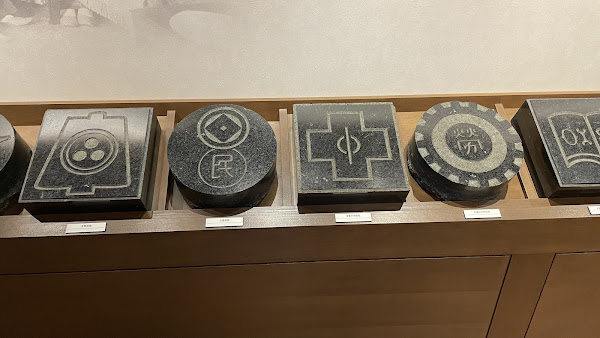After arriving we started meandering around and found the Ohara mansion where Magosaburo Ohara, the founder of Kurashiki Silk Textile (currently Kuraray Co., Ltd.), and generations of the Ohara family lived.
Among the Ohara family's friends appeared also Herbert von Karajan, the Austrian composer who conducted the Berlin Philharmonic for 34 years.
The family book collection serves today as a small public read-in library and cafe:
The Ohara family's art collection is displayed to the public in a dedicated art museum. They were merchants, entrepreneurs, well-travelled, and they got a lot of international recognition.
The old merchant quarter is called the Bikan historical area. It contains many fine examples of 17th century wooden warehouses (kura, 倉) painted white with traditional black tiles, along a canal framed with weeping willows and filled with koi. The area has no electric poles in order to make it more closely resemble the look of the Meiji period. This is very atypical in rural Japan where outdoor electricity poles and wires dominate the landscape. Here the landscape was more dominated by domestic toursits who came here to rent a kimono and other traditional costumes and walk around, take selfies, take rickshaws while wearing them.
Some photos of the old town:
We had lunch at a very traditional Japanese restaurant where you only need to decide about the drinks and the rest is set.
In the afternoon we went beyond the touristy center and explored some anjacent neighborhoods. It's like a step back in the past.
We peeped in the Kurashiki Museum ofr Folk-Craft in which we couldn't take photos, but the ceramics, glass and basket collection was impressive nevertheless.
















No comments:
Post a Comment